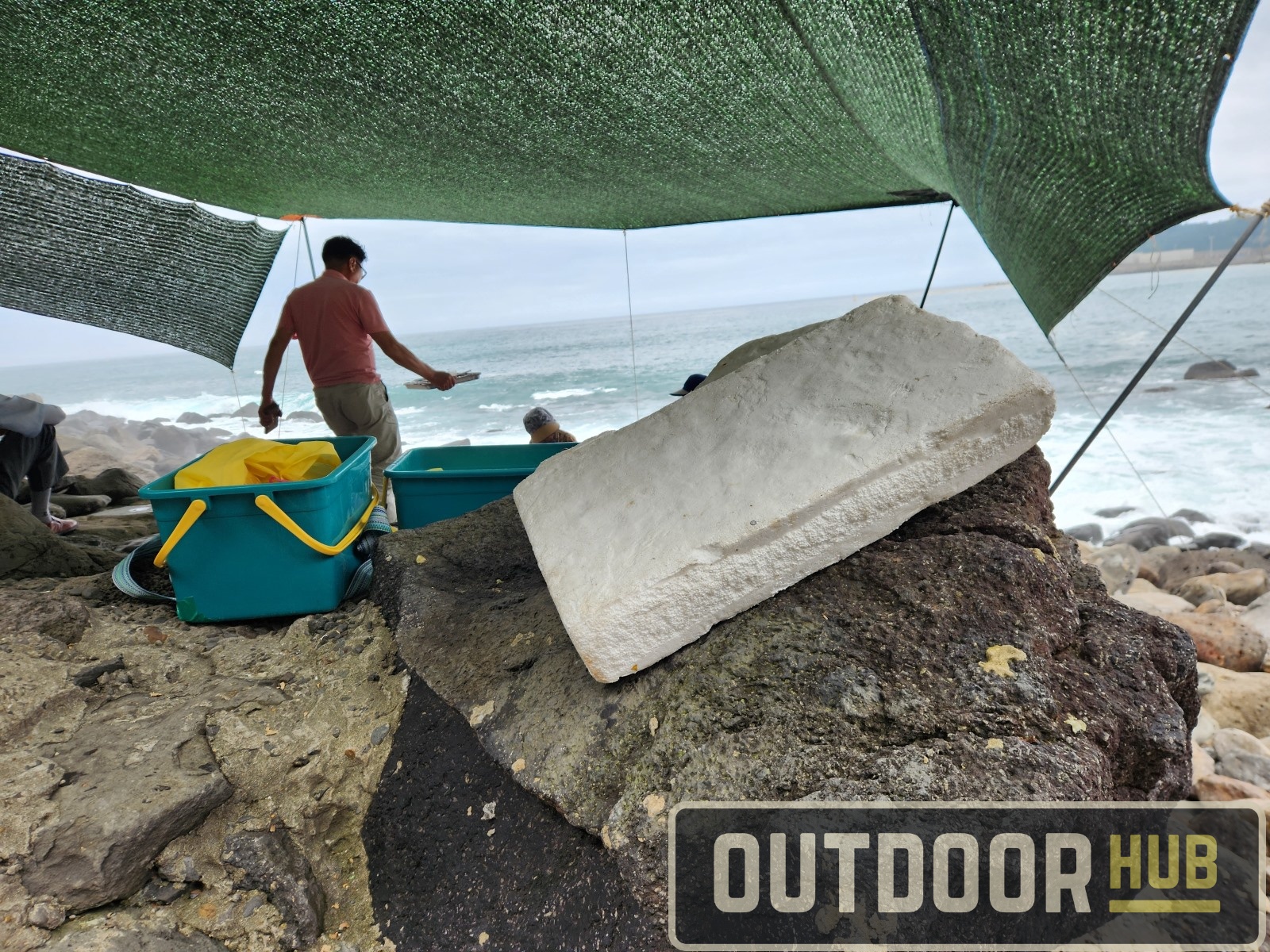Traveling South Korea – Waterfalls & Haenyeo on Jeju Island
Eugene L. 11.30.23

In my first article about exploring Jeju Island, I brought up the island’s old nickname of Samda-do which alludes to the three most abundant things on the island, Rocks, Wind, and Women. Well, I’m going to be talking about some of the women of Jeju Island today. Specifically, the Haenyeo female divers of the island. They earn their living by harvesting the bounty of the ocean around Jeju Island. Considered by many to be iconic of the island the Haenyeo are known for their strong will, independent spirit, and determination. They are capable of holding their breath for over three minutes at a time and diving down to 30 meters deep (98ft) on the hunt for shellfish. Their general quarry from the ocean are abalone, sea snails, octopus, sea urchins, sea squirts, oysters, sea cucumbers, and various edible seaweeds.
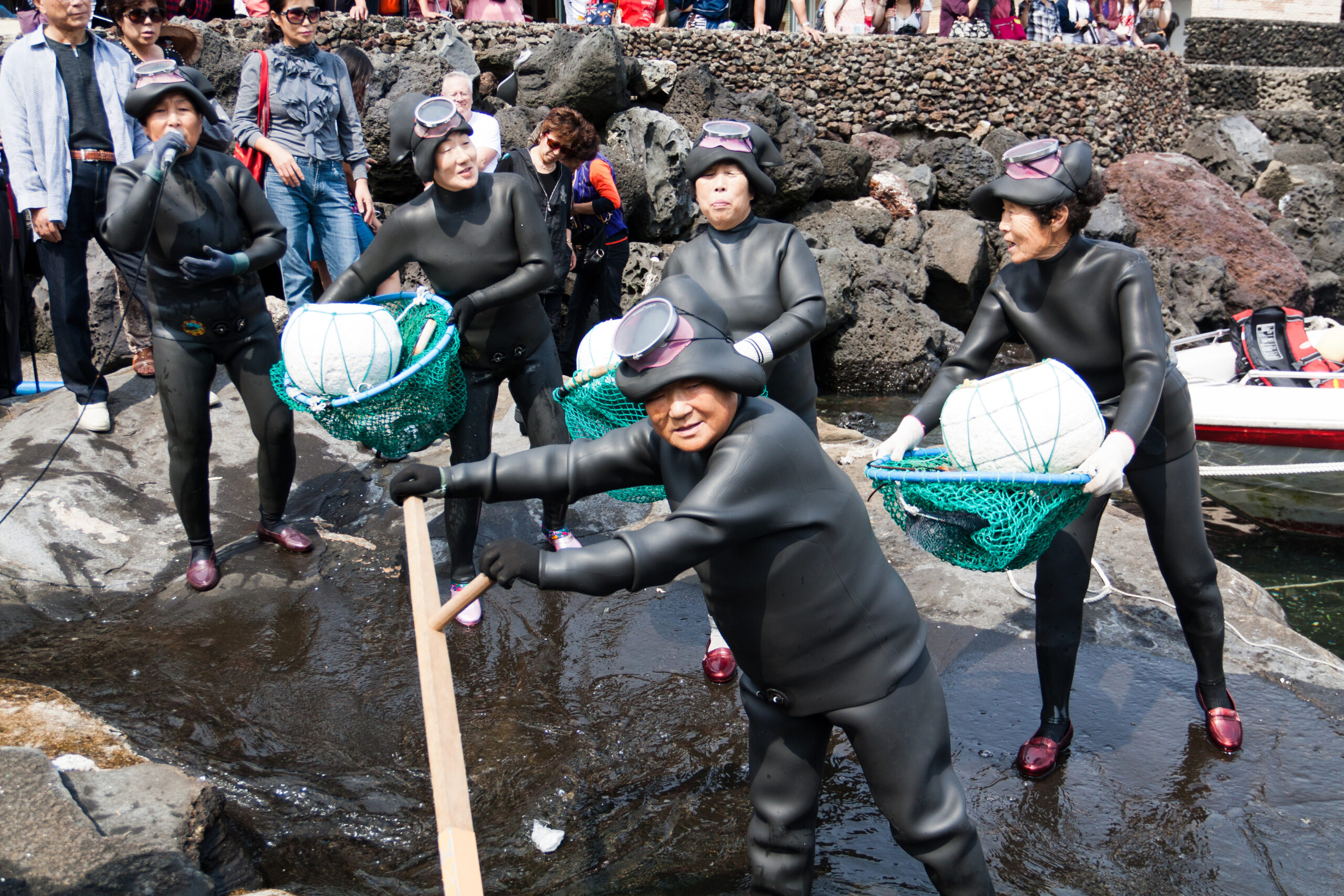
Haenyeo traditionally start their diving training at the age of 11, working the shallows until they gain more skill. After about 7 years of training, they are considered full-fledged Haenyeo capable of diving in deeper waters. An odd thing for a traditionally Confucian culture these women are the breadwinners of their homes, they are representative of the semi-matriarchal family structures on Jeju Island. While not always the case, the Haenyeo are now celebrated as one of Jeju Island’s greatest cultural treasures, even being added to the UNESCO Intangible Cultural Heritage List in 2016 and the South Korean Intangible Cultural Property List in 2017. But even with that being the case they are disappearing as time goes on, as of 2014 it was shown that 98% of Haenyeo were over the age of 50. Some of the oldest Haenyeo are now well into their 80s, still diving the waters around Jeju Island. For additional info on Haenyeo check out this video on them by UNESCO here.
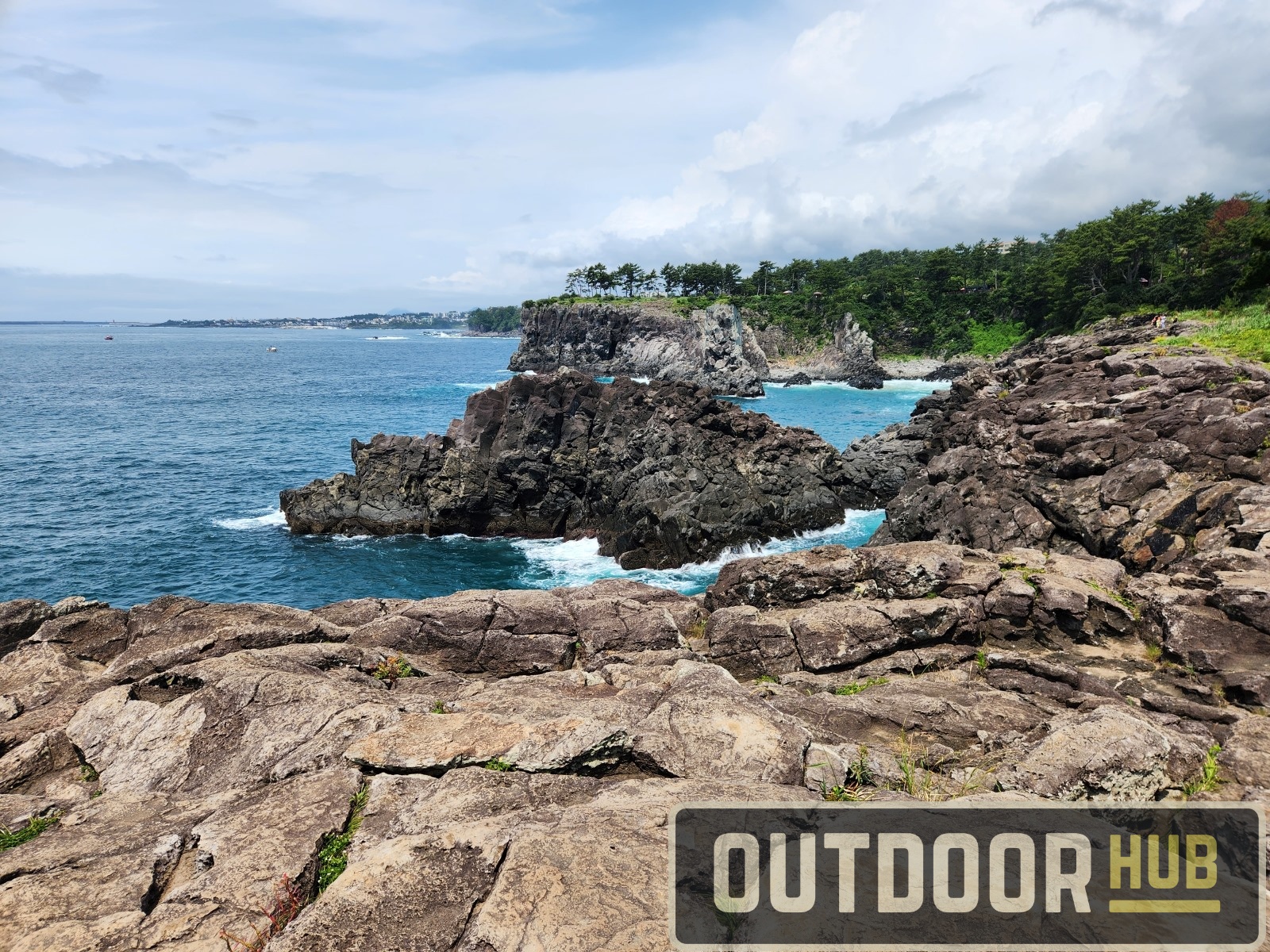
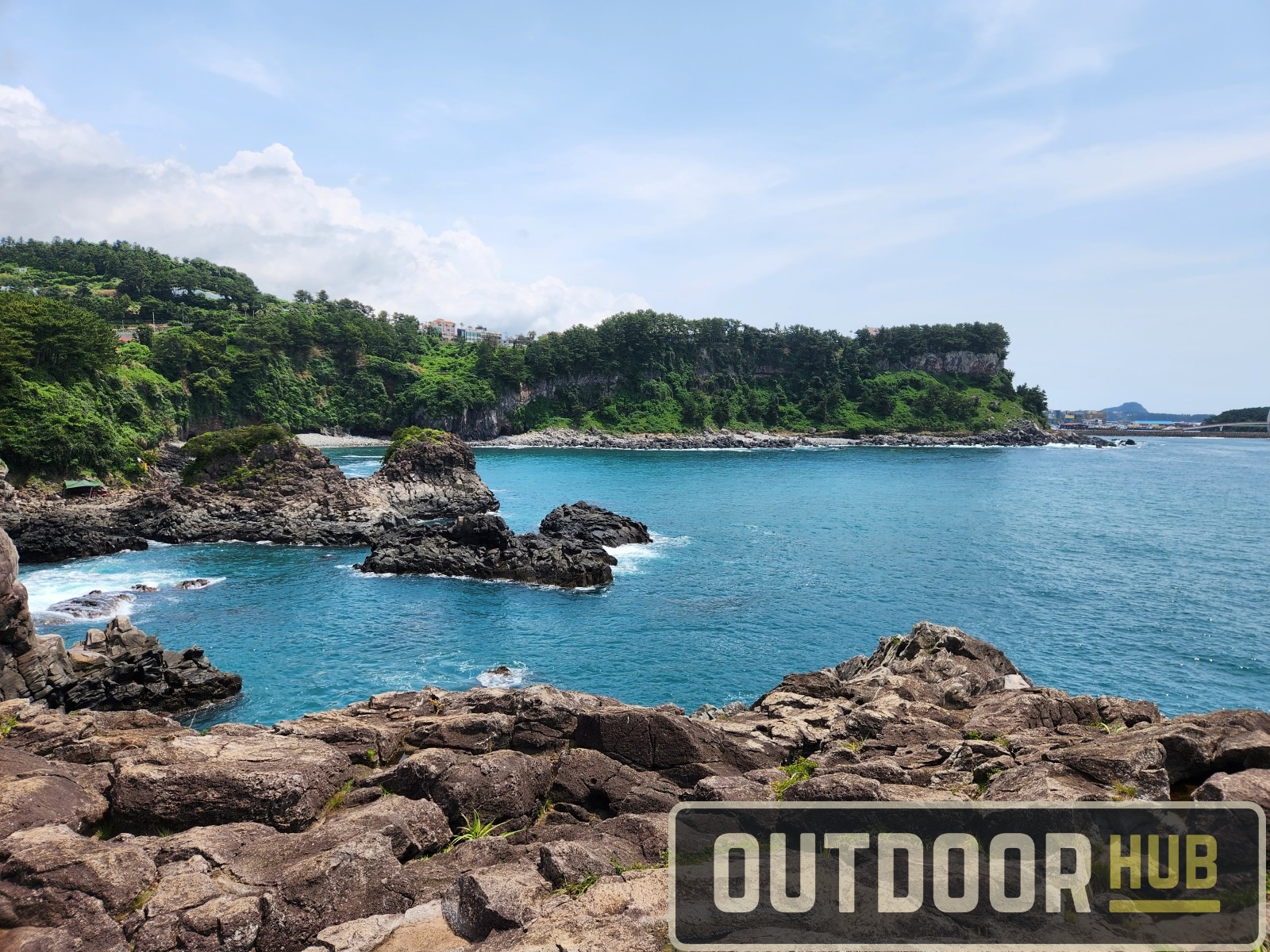
Ok back from my lesson about the Haenyeo, we’re back to exploring Jeju Island again. This was the second day of the trip there, where we were exploring the south coast of the island. The plan for the day was to start on the west side of the coast then travel east along the ocean stopping here and there at different sights and attractions along the way. We had our sights on visiting some of the famous waterfalls of Jeju Island, Jeongbang Waterfall, Cheonjiyeon Waterfall, and Cheonjeyeon Waterfalls, which are all on the south coast. The original plan was to stop at Cheonjiyeon Waterfall, but it was just too crowded once we got there. There were tour buses offloading as well as just a giant shopping plaza full of people that we didnt really want to have to deal with. So we went 5 minutes down the coast to Jeongbang Waterfall. While it wasn’t empty, there at least weren’t any tour buses at this spot. After we parked we went up to the ticket booth and bought our tickets, 2000 won ($ 1.53 USD) a piece.
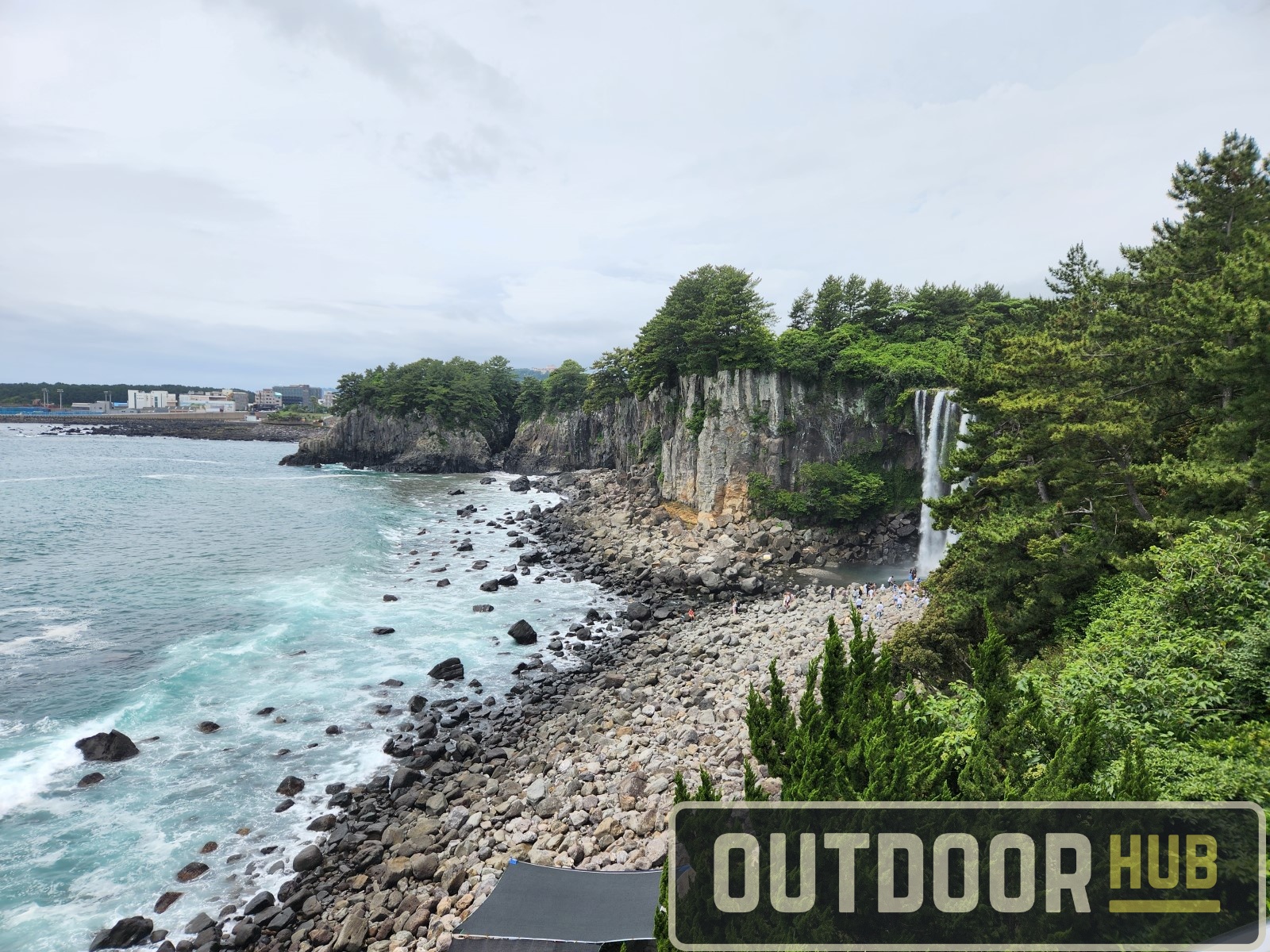
With our tickets in hand, we continued down a few steps, past the little shops towards the booth at the entrance. From there it’s 130 steps down the side of the cliff to the “beach”. While the steps aren’t too bad as a whole a few are a little steep. The steps are also cut from the island basalt stone so can be slippery when wet, so do be careful. If you need a break when going down or coming back up, there are some viewing platforms that you can take a breather on and also take in the view. Once you reach the bottom of the steps you reach a basalt stone path, also slippery when wet, that you follow to the base of the waterfall. While walking along this path I noticed this tent out on the rocks to our left as we went by.
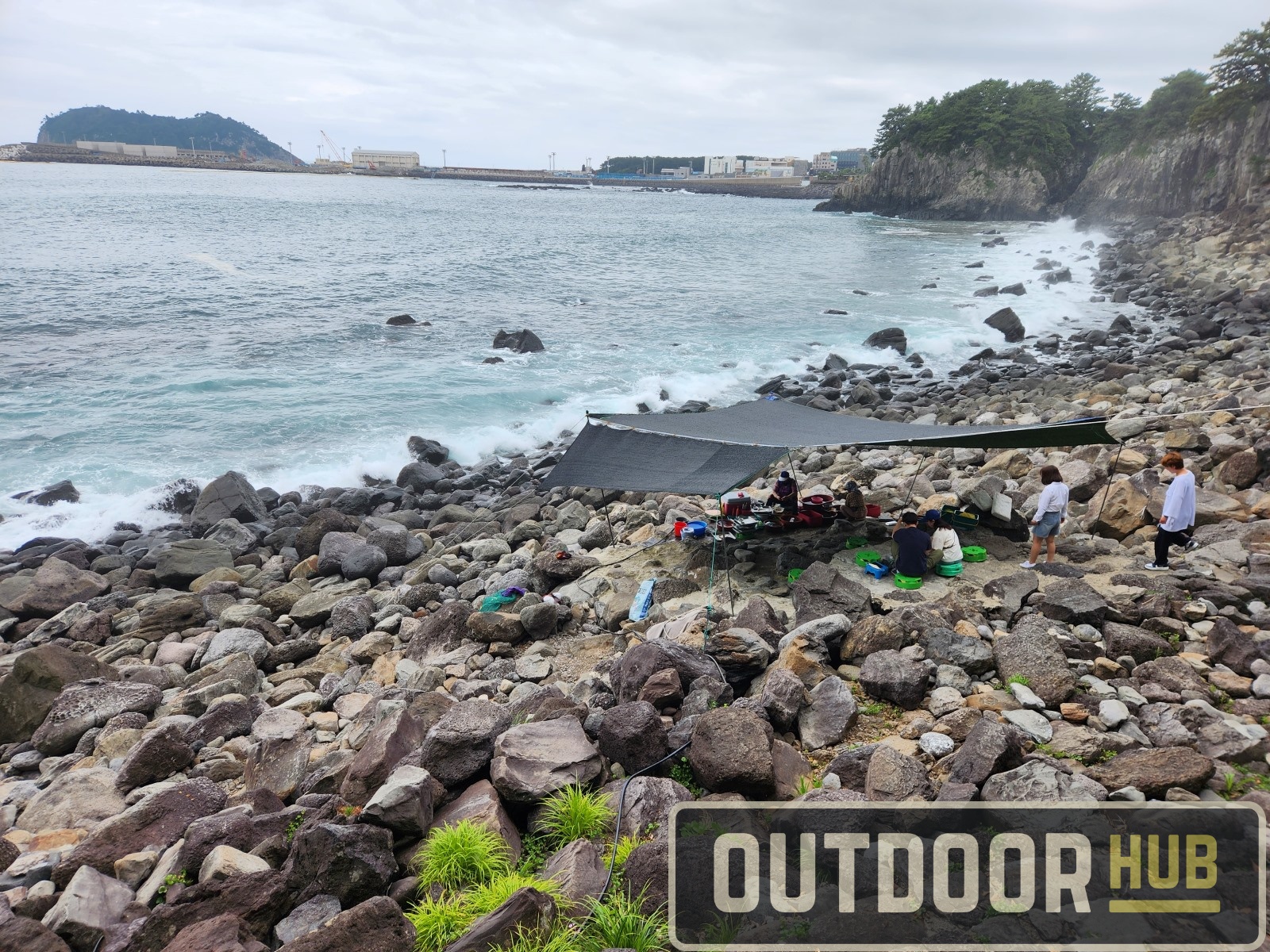
I thought hopefully maybe they might be Haenyeo selling their catch and kept going to the waterfall, planning to check it out afterwards. The path ends with some steps that just go down to the boulders. It was a bit treacherous with large gaps in the boulders and rocks that could trip you up easily, and some of the rocks were wet from the spray and mist of the waterfall making them slick. So if you go take your time and be deliberate with your steps, you don’t want to eat shit and then have to hobble up 130 steps. It takes a bit to cross the boulders but once you get near the falls and pool, the wind and mist coming off the falling water feel amazing. We just took some time to take everything in, and also watch other tourists almost eat shit on the rocks. Side note, if you go down near the shore you will get splashed and possibly soaked by the surf hitting the boulders, which we did see happen to a family as they were trying to take a photo.
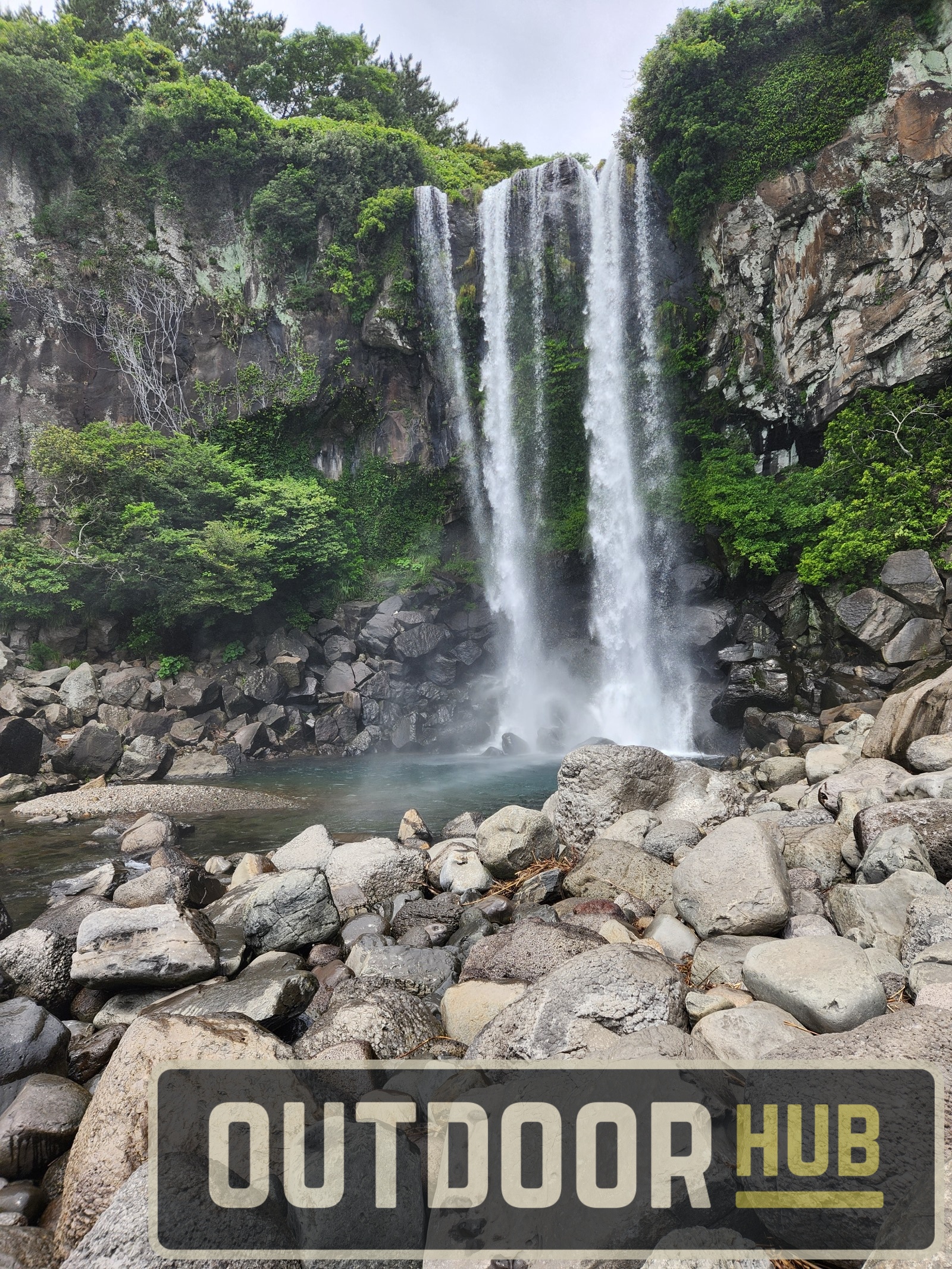
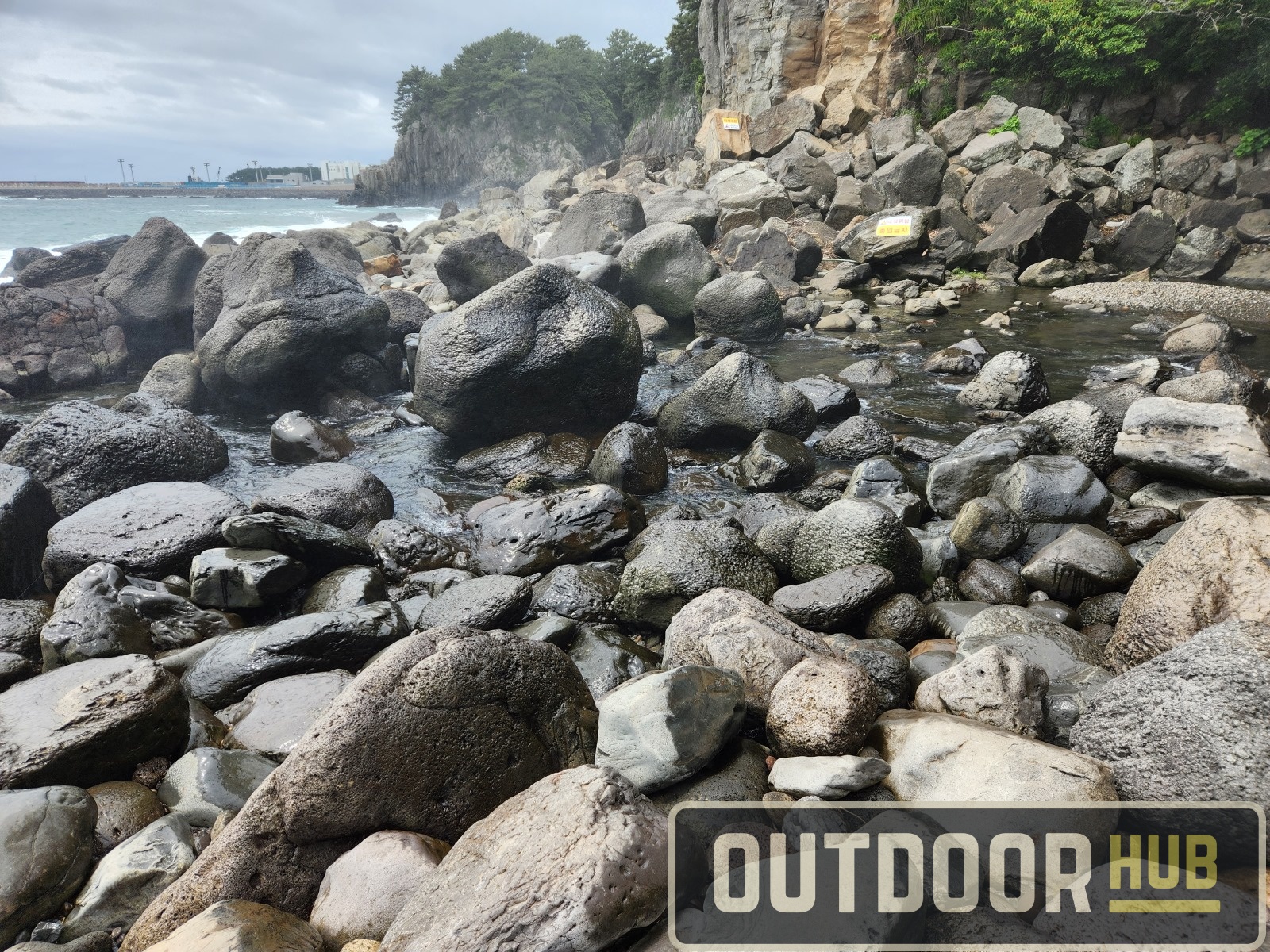
Now done with taking in the falls it was time to head back and get a move on down the coast. But I wanted to check out the tent we saw earlier. When we walked up we saw the tubs of live seafood, it was a couple of Haenyeo selling plates of their fresh catch. They had four tubs that had live abalone, sea cucumber, sea squirts, and turban snails that they had caught earlier. So with both of us loving seafood had to get a plate of shellfish sashimi right on the rocks.

They had two menu choices, a large plate or a small plate. With both sizes, you pick which shellfish you want and they cut it up for you fresh right there. We got the small plate which was 50,000 won ($38.17 USD). We got the abalone, sea cucumber, and turban snails. Presentation of the seafood is simple, a melamine plate with chojang(sweet and tangy chili paste) for dipping and fresh garlic all on top of an aluminum tray with some chopsticks. Honestly I thought it was perfect, it lets the seafood speak for itself.
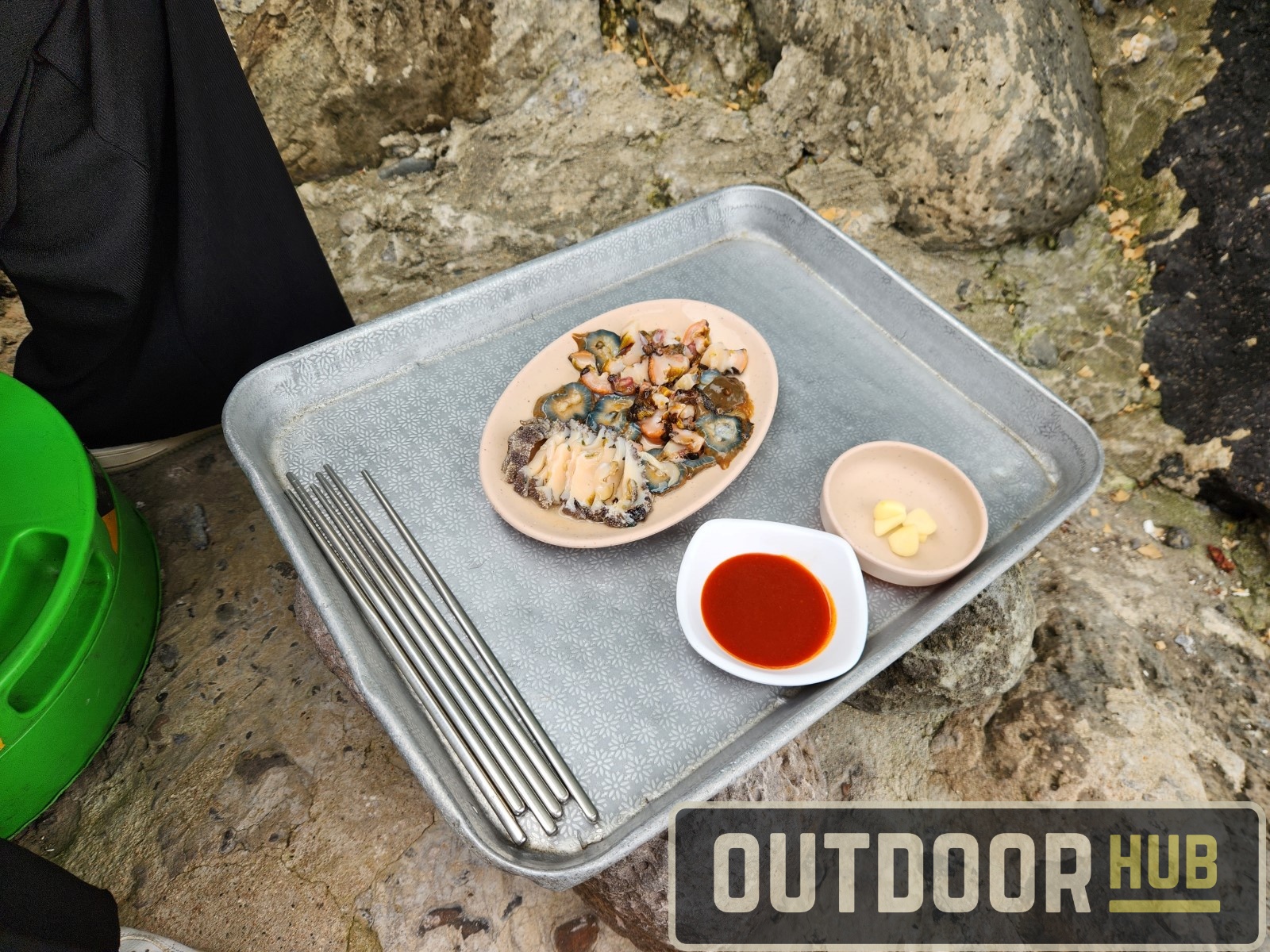
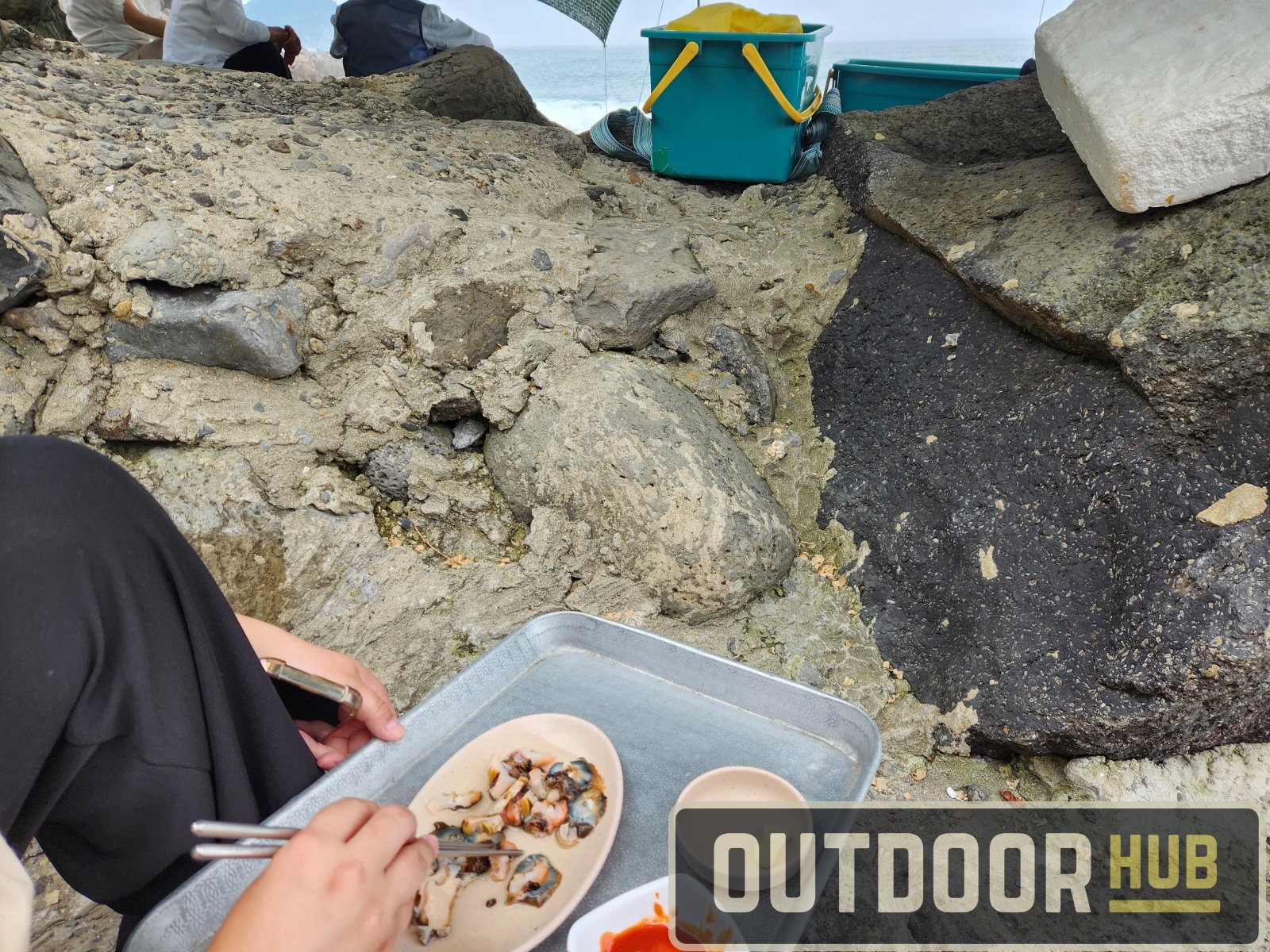
Around the tent, they had some weighted plastic seats as well as some big pieces of styrofoam for chairs. I grabbed a couple along with a couple of rocks for a table to place the tray on. This stuff was great, the freshest I’ve ever had. The stuff I’ve had flown in for work all the time, but this was far better than any of that. Price-wise, this was a little higher than other things we’ve had in South Korea but still far better value than what you can get in the US. I already know this won’t be agreeable to most of y’alls palettes, the texture would be offputting to a lot of people. But if you consider yourself adventurous give it a try. Also if you have the chance to eat seafood caught and served by Haenyeo, do it. I don’t want to end this on a down note but the Haenyeo are disappearing. They are aging out and there isn’t much a new generation coming in to replace those who leave. I couldn’t imagine wanting my daughters to have such a difficult and dangerous job, rather I would want them to work somewhere else. So while the Haenyeo are still around take some time and try something new if you happen to be on Jeju Island.
